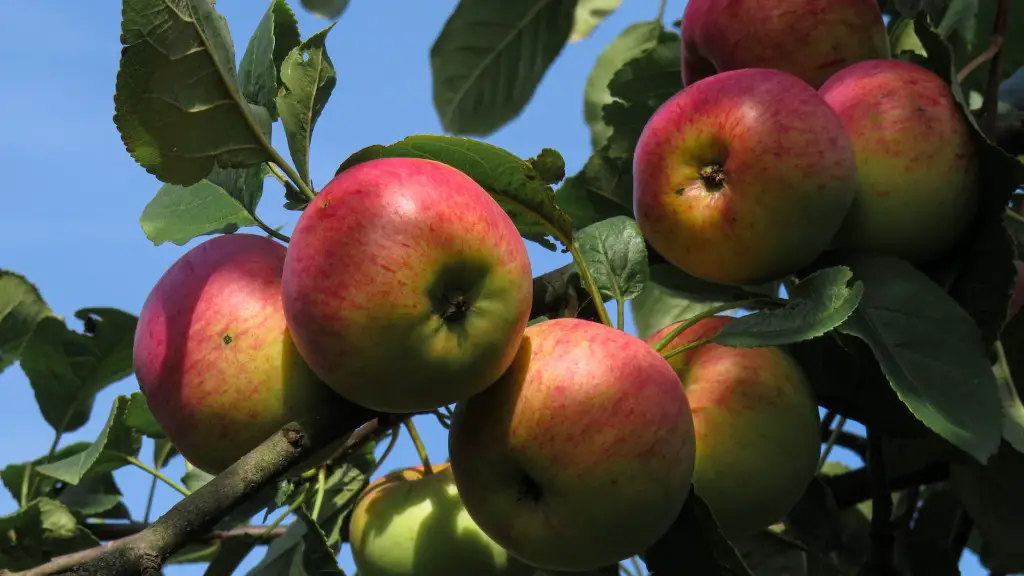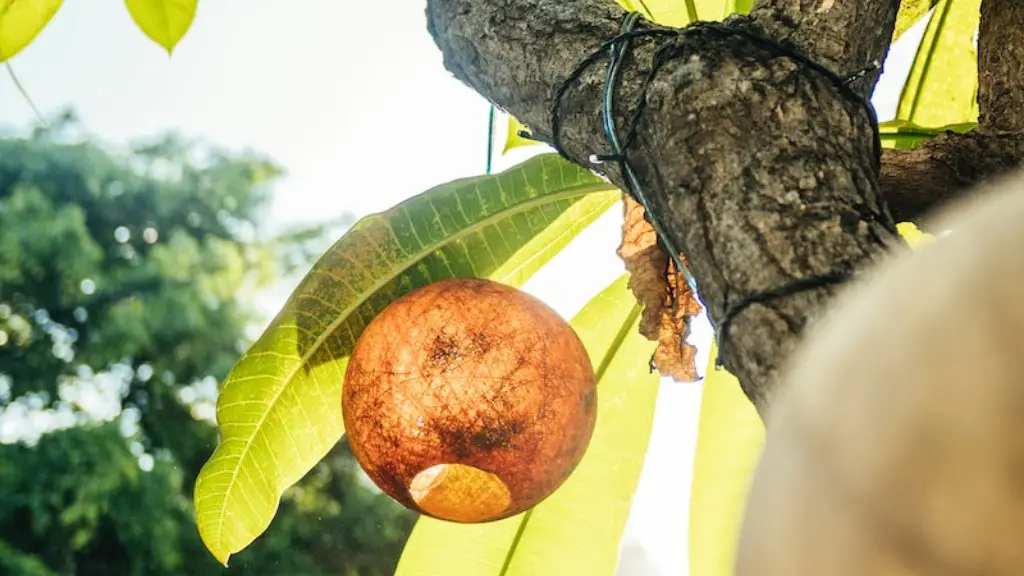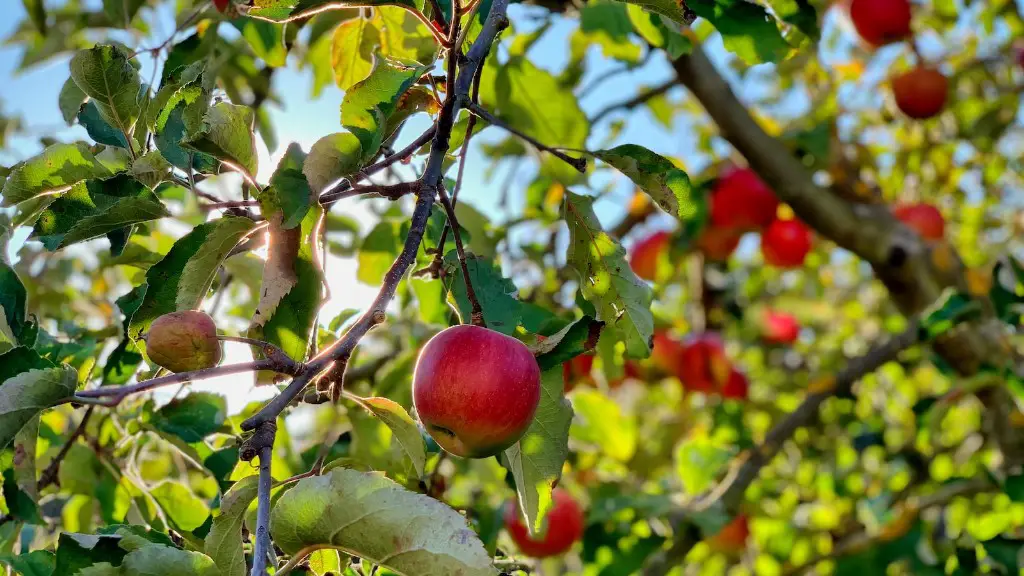Apple trees, although usually productive and rewarding, can be prone to ‘non-fruiting’ periods. During these periods, the tree can still appear relatively healthy, even displaying normal and vigorous growth, but will exhibit little or no flowering or fruiting. Understanding why this happens and the potential solutions can be difficult, but can greatly improve the orchards potential for productivity and minimize the need for corrective action in the future.
A number of factors can lead to apple trees not fruiting. The most common of these is inadequate pollination. Apple trees are pollinated exclusively by insects, such as bees and other pollinating agents, so if they are absent, the tree won’t receive the necessary pollen to develop fruits. Apples also require a certain amount of chill hours in order to produce viable fruit, and this is sometimes lacking.
Nutrients are also essential for apple trees to be productive, and a lack of certain minerals corresponding to certain growth stages can severely limit the development of blossoms and fruit itself. For example, nitrogen is essential for flower development, while calcium is needed for fruit growth. Many of these nutrients can be obtained from the soil and necessary supplementation is a must for healthy, abundant fruit.
High temperatures and a lack of moisture can also cause an apple tree not to flower or bear fruit. Apple trees need cooler weather to set fruit, and this is most likely the reason for a lack of production in nurseries and landscapes in warmer climates. Additionally, drought stress can prevent blooming and fruiting, as well as make the tree more vulnerable to disease and pest infestation.
Sometimes, pruning can also be the cause of an apple tree not setting fruit. Pruning should always be done with a knowledge of fruit tree physiology and with an objective in mind. Improper pruning can result in a tree that is over-vigorous and fails to flower or bear fruit until it is provided with corrective pruning techniques. Lastly, programs of pest and disease control must always be in place to make sure there are no issues that can affect trees either in a way that does not allow them to produce or in a way that makes the fruits unsuitable to harvest.
Bees and Other Pollinators
Bees and other pollinators are essential for apple trees to produce fruits and must be present if you want to enjoy a healthy harvest. If there are no pollinators in the area, you can encourage them by planting flowers that produce nectar and pollen. Planting trees in groups can also help pollination, as they tend to share more pollen when planted close together, providing a richer environment for bees.
It is also important to ensure the pollinators in your area have adequate shelter. Building simple nests for bumblebees in the orchard can help encourage beneficial insects to stay around, as well as provide a safe place for them to feed and rest. Lastly, make sure to avoid using any chemicals that could kill beneficial insects in the orchard.
Suitable Climate for Fruiting
Apple trees need cooler weather to fruit and can suffer from drought stress when temperatures are too high. To help keep the soil moist and cool, it is recommended to mulch the base of the tree with organic materials such as hay, leaves or compost, this will also help to improve the fertility of the soil.
Watering can also help to reduce stress and encourage more productive blooming and fruiting. Try to water the tree deeply and regularly, especially when the temperature starts to rise. Sprinklers and soaker hoses can be a great way to ensure even moisture coverage.
Regular pruning can also help, as can applications of growth regulators to limit the size of unwieldy trees and encourage a more appropriate shape. Furthermore, make sure to protect the tree from extreme weather, such as strong winds, hail, and frosts.
Nutrition for Healthy Trees and Fruits
It is essential to provide your apple tree with the correct nutrients for a healthy blooming, setting of fruit and fruiting. Most of the available nutrients can be found in the soil, but this can be insufficient, especially with regards to important minerals such as nitrogen, magnesium and calcium.
To ensure that all the necessary nutrients are present during the critical phases, it is necessary to supplement those minerals. This can be done with organic or synthetic fertilizers, depending on crop and soil preferences. Make sure to check soil pH as well, as apple trees prefer a slightly acidic pH of 6.0-6.5.
It is also necessary to evaluate soil texture, as most orchards need good soil drainage. Amending the soil with organic matter can be helpful to achieve a good balance for the orchard in terms of fertility and optimal root growth.
Pest and Disease Control
It is extremely important to protect your apple tree from pests and diseases. This can be done by inspecting the tree regularly for any signs of damage or pests, as well as using natural agents, such as beneficial insects and microbial agents, to control and kill unwanted pests.
Avoiding too much nitrogen fertilizer can also be helpful, as too much can make the tree more susceptible to diseases, such as fire blight. It is also important to prune out any dead, diseased or broken branches, and to spray the tree with the appropriate pesticides and fungicides if infestations are suspect.
Finally, perhaps the most important factor in controlling pests and diseases is to ensure optimal growing conditions for the tree. Good fertilization and proper irrigation can often be enough to discourage most pests, and to keep the tree healthy and blooming.
Fertilizers and Soil Amendments
Nutritional deficiencies can often be corrected with the proper type of fertilizer. Just make sure to read and understand the labels, and to follow the recommendations. Organic fertilizers are often preferable and can be quite effective. Foliar spraying can also be useful for quickly correcting deficiencies.
In terms of soil amendments, adding organic matter such as compost or aged manure can help to increase organic content and beneficial microorganisms in the soil. This will help make the soil more fertile and also increase insect populations. Adding mulch around the tree is also beneficial as it helps to retain moisture and prevents the soil from drying out.
In addition to fertilizers and soil amendments, proper fertilization practices should be in place to ensure the trees have adequate nutrition and to prevent over-fertilization. A soil testing can also be helpful to evaluate nutrient levels, and to determine which additional amendments are needed.
Corrective Pruning Techniques
Improper pruning is often the cause of an apple tree not setting fruit or flowering, and can involve cutting back branches far too severely or not thinning out flower buds that come from the previous year. Pruning should be done in late winter or early spring, and is best done with a knowledge of fruit tree physiology and with a plan in mind when doing it.
To make sure the tree is productive, thin out flower buds from the previous season and try to promote maximum light penetration and air circulation. Make sure to remove any dead or weak branches and avoid cutting back vigorous branches that can support flower and fruit production. The four-year old system is often a good guideline to follow.
Finally, make sure to avoid too much vegetative growth. Some vegetative growth is important, but too much makes the tree more vulnerable to disease and pests and can make it produce too much foliage and not enough flowers.



